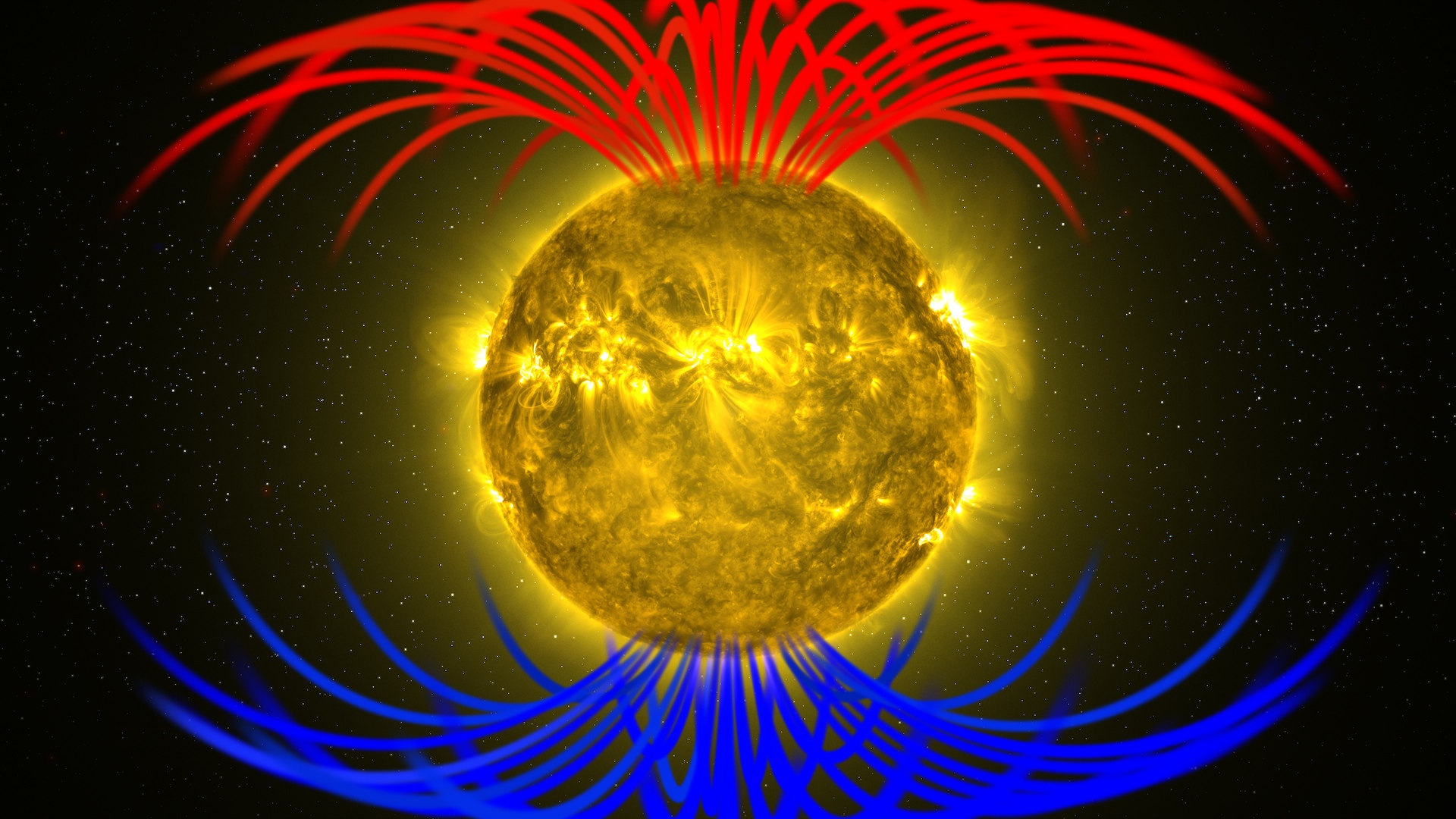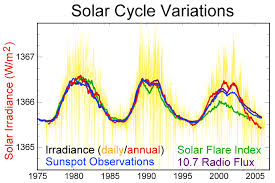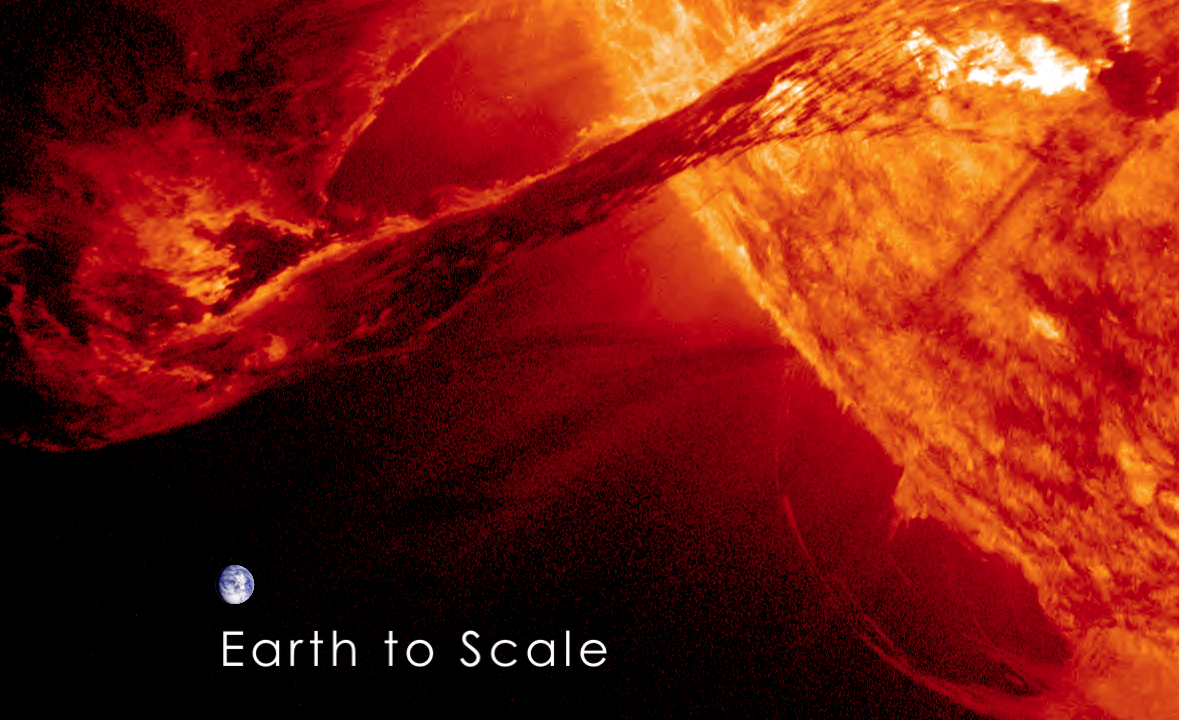Overview
More is known about the Sun than any other star, because the details of its structure, its features, and its effects can be observed at relatively close range. The magnetic field of the Sun leads to changes in solar activity, such as the number and timing of sunspots and solar flares. Telescopic observations and solar space missions have enhanced understanding and raised more questions about its composition, activity, and effects.
Solar Magnetic Field
The Sun, like other stars, has a magnetic field created by the movement of plasma in currents between its core and its surface. It is not a solid body, so the heated plasma at different latitudes rotate at different speeds. Differential rotation and convection create huge dynamos that produce self-sustaining electric currents. Some electric currents are deep within the star and other chaotic systems are nearer the surface. The solar magnetic field may be partially responsible for heating of the corona.
Solar Cycle
The solar cycle of sunspots corresponds to the oscillation between magnetic fields, a cycle that takes about 11 years. Sunspots are the result of intense concentrations of magnetic activity that keep heat from reaching the surface. Their magnetic polarity reverses at alternate cycles. At the lowest point of the cycle, very few sunspots can be seen, but at the highest point, large groups of sunspots form at the solar equator. Although sunspots themselves are between 2700° C and 4200° C, the surrounding photosphere is about 5500° C, so they look dark by contrast. The most recent observations show that sunspots usually last from days to weeks, and underneath the spot itself a rotating downdraft concentrates and traps the magnetic field.
Solar Activity
When sunspots link the solar interior with the surrounding solar atmosphere, huge flashes of energy called solar flares affect all layers, the photosphere, chromosphere, and corona. As much as 1/6 of the total energy output of the sun can be released in a few minutes. Sometimes, mass can be ejected through the corona. Some of the X-rays and UV radiation from solar flares can disrupt long-range radio and other types of communications on Earth.
Solar Space Missions
Detailed observations of solar activity have been made from observatories on Earth, and some observatories have special instruments to study the Sun without damage. Some of the earliest space probes, the Pioneer series launched in the 1960s, measured the Sun’s magnetic field and the solar wind. The SOHO mission is joint between the United States and the European Space Agency and was extended to 2012. Its successor, the Solar Dynamics Observatory, has a series of instruments built to study the Sun at a number of wavelengths. Other probes are planned to launch, continuing observations from space without interference from the atmosphere of the Earth.
Interested in science tutoring services? Learn more about how we are assisting thousands of students each academic year.
SchoolTutoring Academy is the premier educational services company for K-12 and college students. We offer tutoring programs for students in K-12, AP classes, and college. To learn more about how we help parents and students in Mount Juliet, TN: visit Tutoring in Mount Juliet, TN




